These Emerging Danish Designers Define Scandi Fashion
These are the names fashion It girls everywhere are wearing.
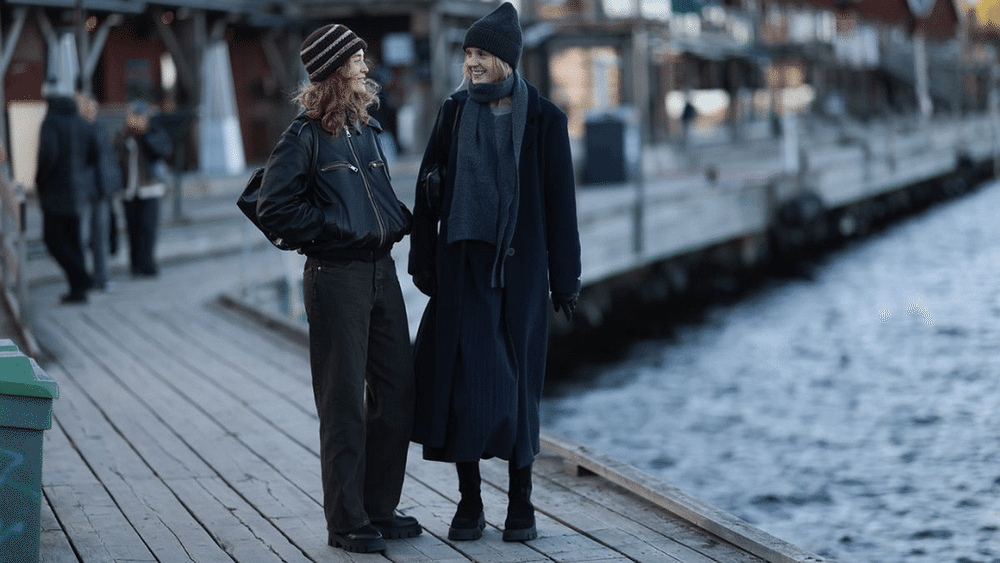
Ask any fashion girl what major style city she’s looking to for outfit inspiration these days, and you might be surprised to hear it’s no longer Paris or New York—it’s Copenhagen.
The Danish capital has not-so-quietly taken over the personal style conversation, hosting what has even been deemed by plenty of editors and publications the “fifth Fashion Week.” The city’s quintessentially quirky style doesn’t take itself too seriously. To dress like a Scandi girl is to dress with a youthful sense of freedom and fun. And in large part that’s because the Danish designers emerging from Copenhagen seem to have a keen understanding of how girls really, truly want to dress.
Below, we asked the best emerging Danish designers how they would define their brands and why Scandi fashion has won over the hearts of fashion girls everywhere.
Related Article: Introducing Copenhagen Fashion Week Standout A. Roege Hove
Rotate: Jeanette Madsen and Thora Valdimarsdottir
How would you describe your brand to someone who isn’t familiar with it?
JM: Rotate is our dream wardrobe come to life. It’s all about bold, elevated, and empowering styles to make everyone feel the best version of themselves.
TV: Rotate is what we thought we were missing in the fashion scene, and now it has become a brand for those who are driven, daring, and glamorous in every way!
What pieces define Rotate?
JM: What defines Rotate is the accentuation of the feminine form, that ultimate “wow” factor that you can find in our puffy sleeves, rushed details, mini and maxi lengths … The bold silhouettes are part of our DNA.
TV: I totally agree. What our most iconic designs—like the Phoebe dress, the Kim dress, or the Noon dress—have in common is that they have an unmistakably Rotate shape.
Why do you think people are so drawn to Scandinavian design in recent years? And what’s a common misconception about it?
TV: Scandinavian design in general—architecture, interior design, etc.—is very functional. What makes the Scandinavian fashion scene different is how wearable everything is; it’s something we unconsciously tap into when we’re designing.
JM: Scandinavian design is thought to be timeless, classic, simple, and minimalistic. However, it’s actually very diverse, and everyone has a lot of takes on the concept. Scandinavian design can also be bold, and Rotate is a clear example of it!
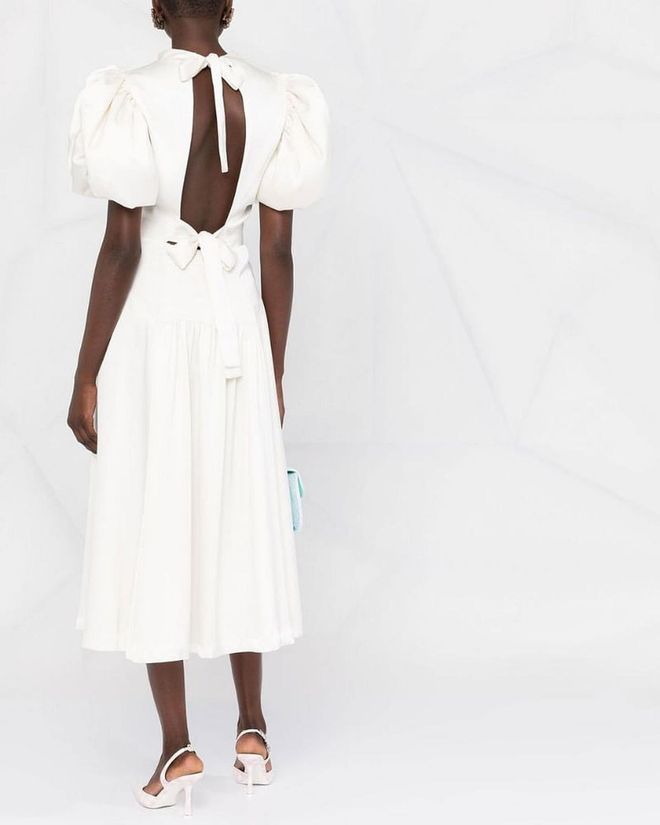
Photo: FarFetch
Rotate Noon Midi Dress
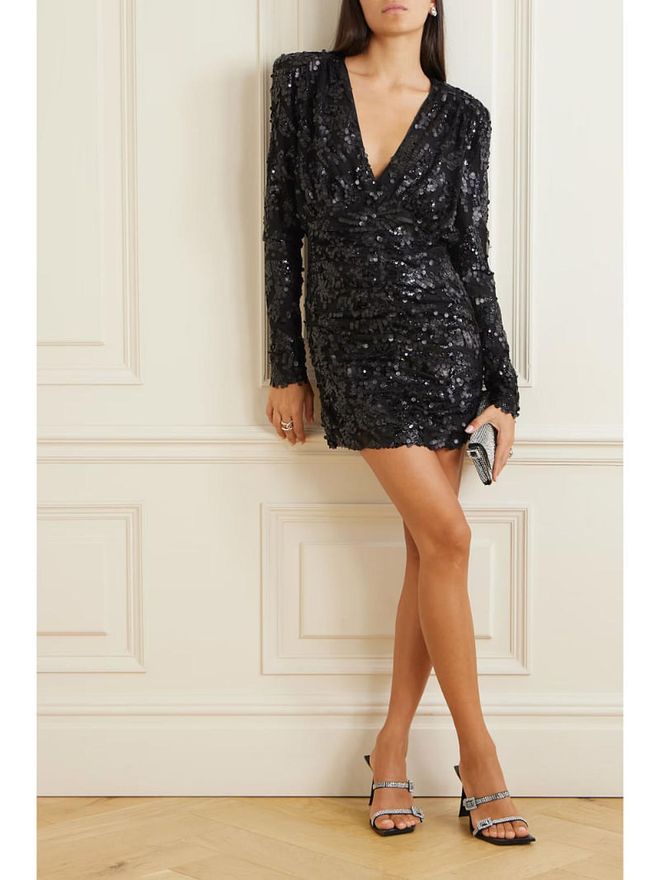
Photo: Net-a-Porter
Rotate Birger Christensen Mini Dress

Photo: Net-a-Porter
Rotate Open Back Chiffon Mini Dress
Remain: Martin Asbjørn
How would you describe Remain to someone who isn’t familiar with the brand?
Remain is all about sophisticated and understated power dressing. It builds on craftmanship and tailoring for a modern woman who understands that confidence comes from her own sense of style.
What are some pieces that define your brand?
More than pieces, it’s the fabrics and tailoring that define our vision—quality leather is at the core of Remain.
Why do you think people are so drawn to Scandinavian design in recent years? What’s a common misconception about it?
Scandinavian design has always been known for its minimalistic approach and clean cuts. We have a tendency not to over-style things, and that’s something that makes Scandinavian design very relatable and desirable.
A common misconception about Scandinavian design in general is that it’s very minimalistic and clean. Fashion events like Copenhagen Fashion Week prove the Scandinavian scene is way more quirky, playful, cool, and less minimalistic.
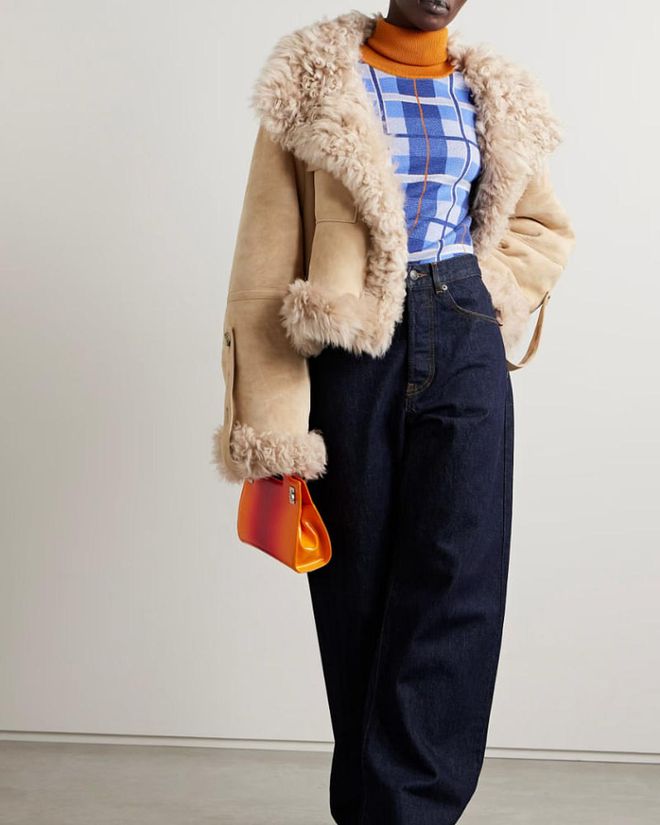
Photo: Net-a-Porter
Remain Shearling Jacket

Photo: Net-a-Porter
Remain Gimma Paneled Shearling Coat
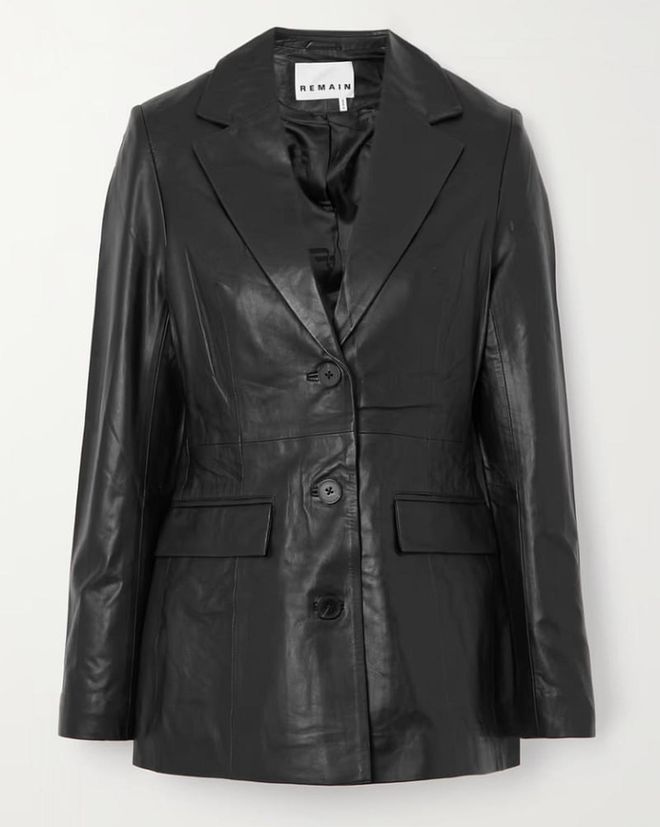
Photo: Net-a-Porter
Remain Usana Leather Blazer
Related Article: 10 Next-Gen London Fashion Designers To Watch
OpéraSport: Awa Malina Stelter and Stephanie Gundelach
How would you describe your brand to someone who isn’t familiar with it?
Bridging classic and contemporary styles with the sporty edge of Copenhagen, we try to ensure relevance and timelessness throughout. Elegant yet sporty, luxurious yet affordable, sustainable yet sexy. Strong women everywhere are our inspiration; we want our customers to feel sexy and confident.
A responsible mindset [is reflected in] the production, [which only uses] recycled or organic fabrics, and a production volume that continuously reflects the demand: to create and produce responsible and relevant clothing without compromising design and aesthetics.
What are some pieces that define your brand?
Our Seamless styles have been an integral part of our collection from the start. They embody our essence, showcasing a blend of the classic and sporty ingrained in our DNA. An example is our beloved Eve top, which has been with us since the beginning. It’s a rib top made of 100 percent recycled seamless silk with an asymmetrical neckline. It looks beautiful on everyone! And of course our Shirley bag in 100 percent recycled silk. It’s so elegant yet practical, as it has adjustable straps.
Why do you think people are so drawn to Scandinavian design in recent years? What’s a common misconception about it?
Scandinavian design is timeless and elegant, but most of all casual and functional. We need layers to stay warm in the cold temperatures, and we also need to dress practical and comfortable, so we can bike to work. The balance between classy and functional makes it effortless.
Due to its simplicity and functionality and the timeless appeal, that resonates with many people. But a common misconception is that Scandinavian design is just white and beige—with the occasional hint of gray. Scandinavians actually love colours and are not afraid to wear them. We often get inspired by nature, and you’ll often find the colours of the forest, the sea, and the earth reflected in Scandinavian design.
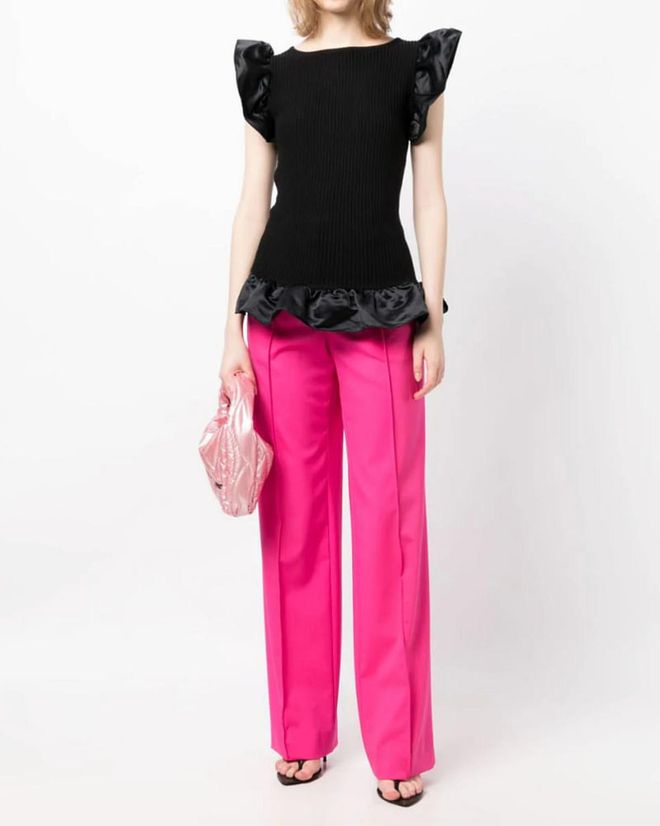
Photo: FarFetch
OpéraSport Sleeveless Ribbed Top

Photo: FarFetch
OpéraSport Eve Recycled Silk Top
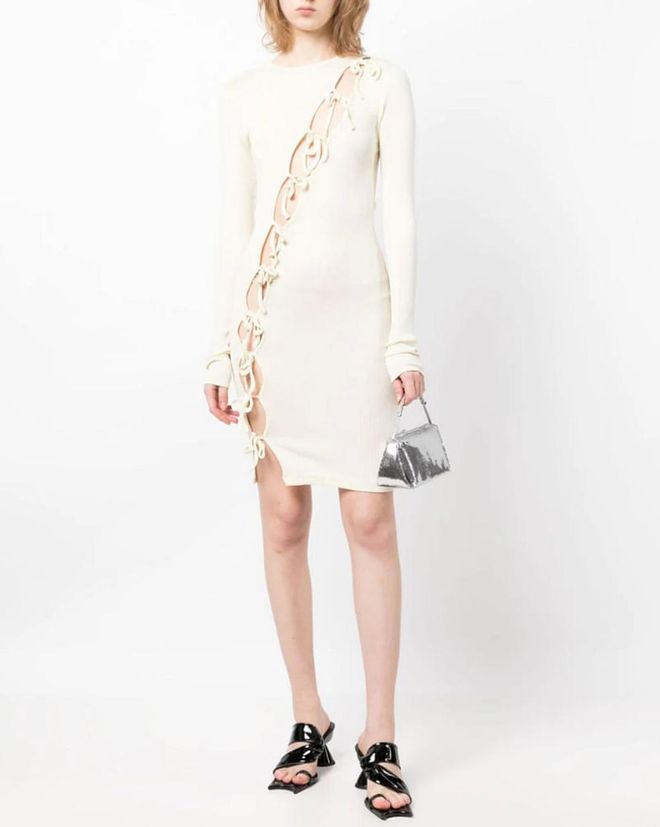
Photo: FarFetch
OpéraSport Elizabeth Seamless Cotton Dress
Gestuz: Sanne Sehested
How would you describe your brand to someone who isn’t familiar with it?
Gestuz is very much rooted in Scandinavian design, with great quality, clean silhouettes, and strong suits, but I always draw in strong references from the vintage wardrobe. And that is part of what sets us apart as a brand. I especially dive into the old music scene and find a lot of my inspiration from the ’70s and ’80s, and the vintage pieces I have collected all over the world. Paris, New York, and L.A. are some of my go-to places for the best vintage inspiration.
What are some pieces that define your brand?
We work a lot with leather, and that has become an important part of the brand. I always want to create the best, affordable leather pieces—such as the perfect jacket— that you can wear for the next 10 years, just like I have with pieces from my own wardrobe and with leather jackets from Gestuz from 15 years ago. Suits have also become a focus point for us. Redesigning them each season and rethinking how a suit can be worn.
Why do you think people are so drawn to Scandinavian design in recent years? What’s a common misconception about it?
Quality and easy to wear. Scandinavian fashion is all about being able to live in the pieces—riding your bike, dropping off the kids, going to work, adding a heel, and going straight out to dinner. We also have a very high standard for quality—in fashion, but also in design generally. I think that is one of the reasons people are so drawn to it. There is also a sense of effortlessness. We maybe don’t dress up as much as someone in Paris or New York, but we are always well dressed without trying too hard.
A common misconception is that we only do minimalism and no colour. That might have been what first drew the international press to Scandinavia, but Scandinavian simplicity can be done in so many ways, also using colours and layers.

Photo: Nordstrom
Gestuz Kailey Wide Leg Coated Jeans

Photo: Nordstrom
Gestuz Uminagz Knit Cowl Neck Top
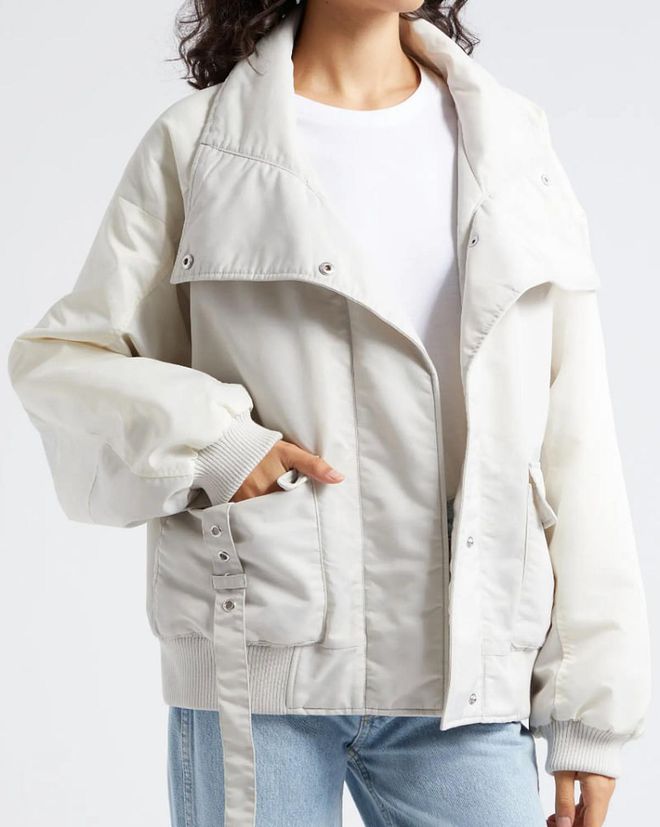
Photo: Nordstrom
Gestuz Dory Bomber Jacket with Bib Insert
Related Article: Meet Homolog, The Asian Fashion House Promoting Self-Acceptance
Skall Studio: Julie and Marie Skall
How would you describe your brand to someone who isn’t familiar with it?
Skall Studio is a very personal and value-based brand, deeply rooted in our own values. From the very beginning, we wanted to create a brand that could take fashion in a more conscious direction. To us it is crucial to use natural materials, mono fibers, and recycled materials, and to have a close connection with our suppliers. Animal welfare is also crucial to us. We never use fur and leather in our collections, and we feel obliged to speak with the voice that animals do not have themselves. On top of that, we always aim to design classic pieces that will stay in the wardrobe for many years to come, regardless of shifting trends. We combine sartorial styles with a feminine and relaxed style—and are often inspired by vintage.
What are some pieces that define your brand?
Our classic menswear-inspired Edgar shirt, which is one of our best-selling styles. It is always part of our collections, and is often updated in a new colour or print. We are also known for our classic outerwear—this season, in terms of our new Gaby coat and jacket that has already turned into an iconic Skall piece, and our outerwear in 100 percent recycled wool, where the colours are obtained without additional dyes and chemicals thanks to the MWool technology by Italian Manteco. Also, our feminine blouses and dresses are part of the Skall Studio DNA, along with our Danish knitwear made in Danish wool in one of the last remaining spinning mills and knitting factories in Denmark, to support local production and craftsmanship.
Why do you think people are so drawn to Scandinavian design in recent years? What’s a common misconception about it?
We have a long history and tradition for creating simple and functional design in natural materials. Classic design is timeless, and we think we have a really strong sense of fashion in Copenhagen that makes the city very interesting. What makes it different is the simple shapes and the focus on the details—that less is more.
More and more people prefer to buy less and better—and in our opinion, it is part of the Scandinavian design DNA. Also, we believe that the level of talent is very high, perhaps because of our history as a country with amazing designers and architects. When we create, we wish to make a difference, we wish to have an impact on people’s lives. It’s not just about the clothes—we also have a story to tell, and that makes the difference.
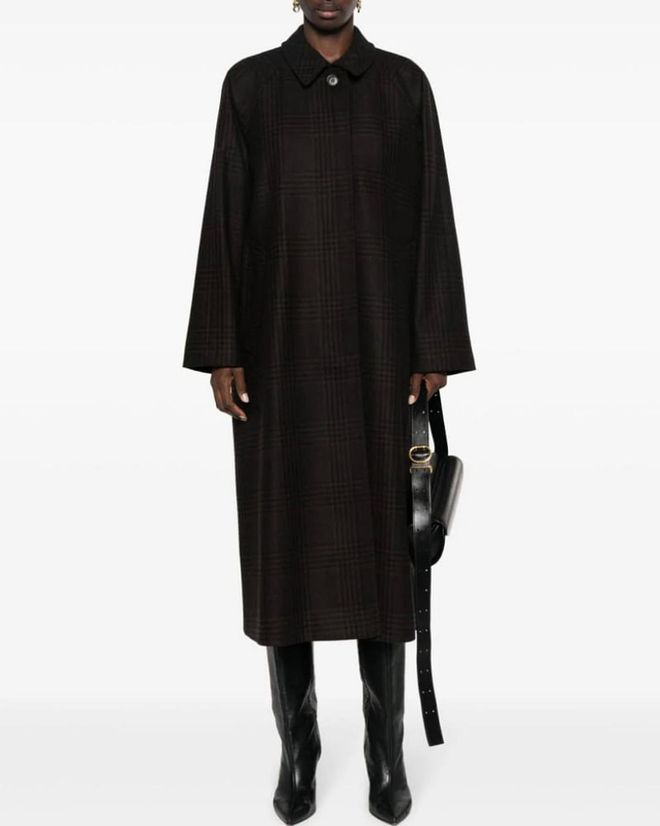
Photo: FarFetch
Skall Studio Mary Check-Print Coat

Photo: FarFetch
Skall Studio Stevie Ruffled-Detail Midi Dress
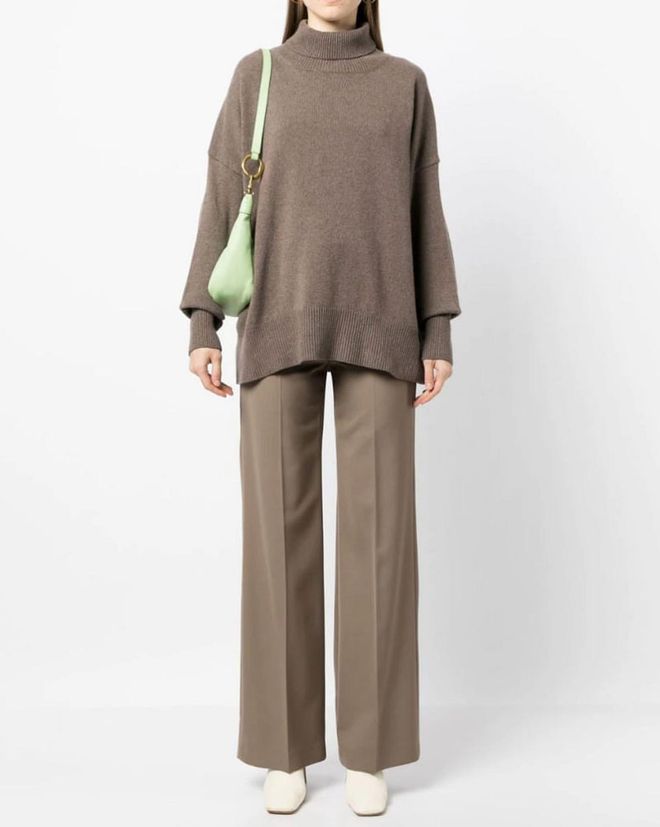
Photo: FarFetch
Skall Studio Dello Roll-Neck Jumper
This article originally appeared in Harper’s BAZAAR US.